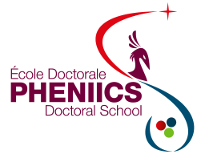Orateur
M.
Pierre Arthuis
(CEA/DRF/IRFU/SPhN)
Description
The recent development of nuclear many-body ab initio methods has extended their application range to middle-mass doubly-closed shell nuclei and light doubly-open shell ones in the past few years, but heavy nuclei are at the moment out of reach. On the contrary, energy density functionals (EDF) have been around for decades, covering the whole nuclear chart. However, being based on phenomenological parametrization and Pauli-violating density dependence, they have their own limitations.
Recently, a proposal has been made to combine state-of-the-art many-body methods such as Bogoliubov many-body perturbation theory (BMBPT) and Bogoliubov coupled cluster (BCC) with modern nuclear EDF
formalism in order to produce a new family of energy density functionals that is at the same time safer on the mathematical side and more predictive throughout the nuclear chart. The key idea is to use the expansion of the Schrödinger equation at play in those many-body methods to build a
sound parametrization of the EDF norm and energy kernels, incorporating much needed correlations while avoiding the usual EDF’s pathologies. The aforementioned many-body methods are based on the concept of breaking and restoration of symmetry, which makes them perfect candidates for this
project.
The present research project constitutes the topic of my PhD thesis. The first objective consists of validating the many-body formalism recently proposed on the basis of the attractive pairing Hamiltonian problem by testing results at second-order in BMBPT against exact Richardson solutions. Once this is done, second-order BMBPT kernels will be implemented in axial symmetry on the basis of a “generalised Gogny” effective vertex. Particle-number-restored calculations will be performed to adjust the free parameters entering the effective vertex on an appropriate set of experimental data. Eventually, calculations focusing on nuclei of current experimental interest will be realised to test the newly developed ab initio-based EDF method.
Auteur principal
M.
Pierre Arthuis
(CEA/DRF/IRFU/SPhN)
Co-auteurs
Dr
Jean-Paul Ebran
(CEA/DAM/SPN)
Dr
Thomas Duguet
(CEA/DRF/IRFU/SPhN)



